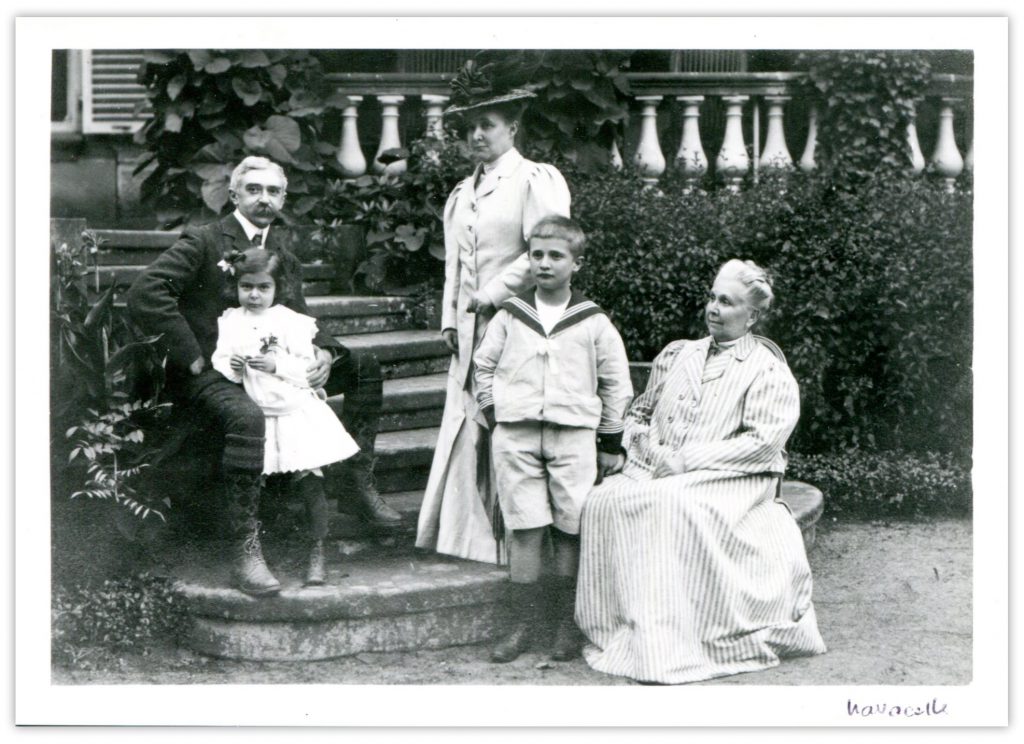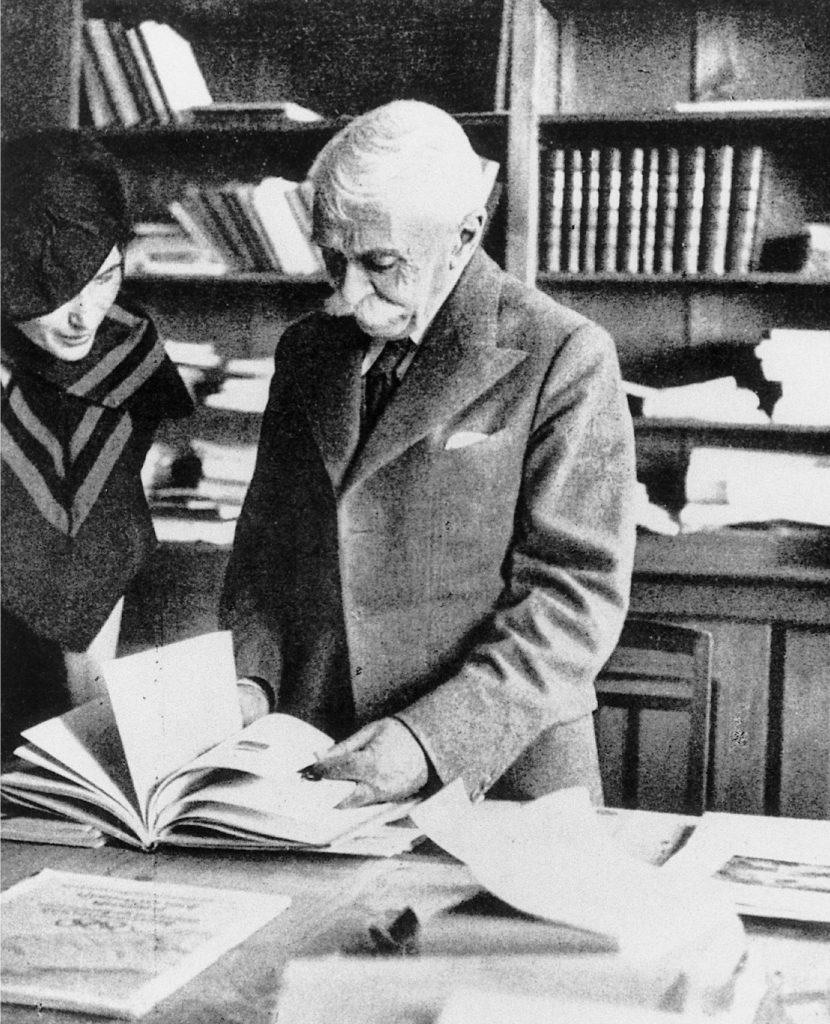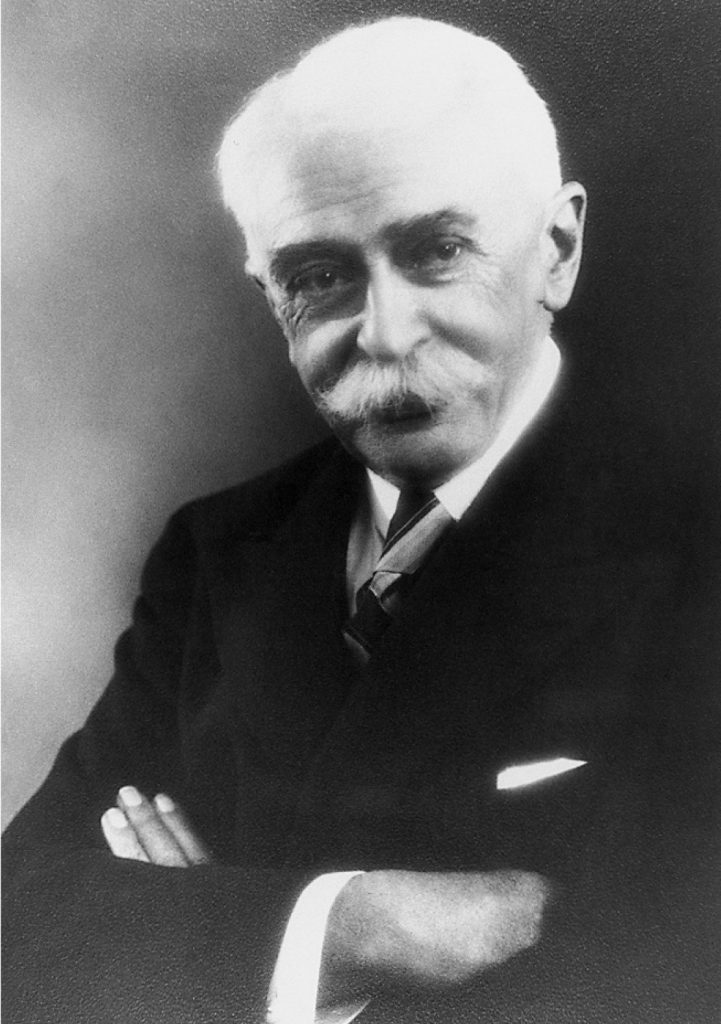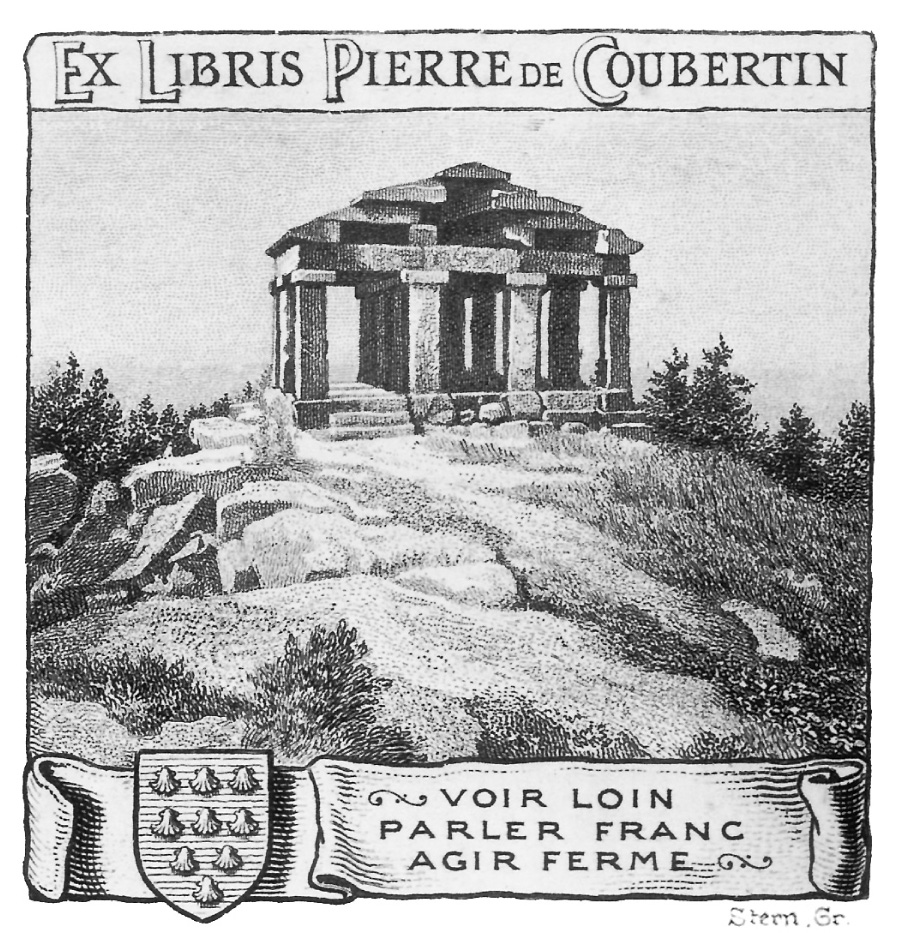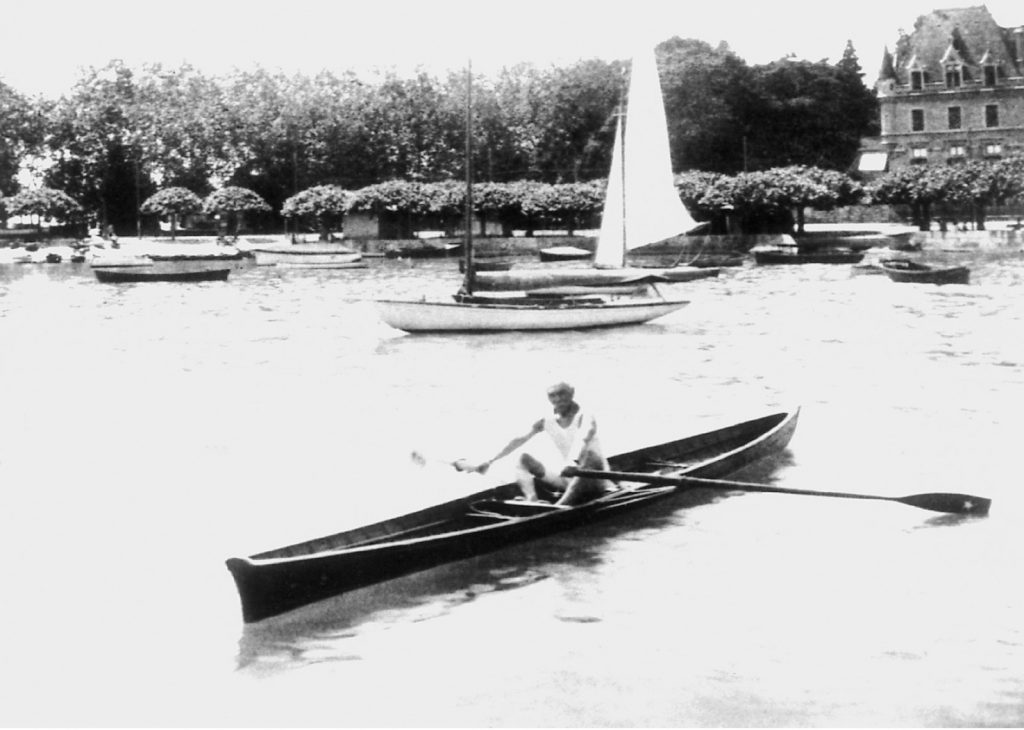A More Private View
Biography of Pierre de Coubertin. A life.
Jean Durry
Charles Pierre, the son and fourth child of Charles Louis de Frédy, Baron de Coubertin (whose family estate was in the Chevreuse valley, not far from the French capital) and Agathe Marie Marcelle Gigault de Crisenoy (who brought to the family Mirville Manor in Normandy), was born on 1st January 1863 at around five o’clock in the evening at number 20, Rue Oudinot, in the seventh arrondissement in Paris.
After completing secondary school at the Jesuit-run École libre Saint-Ignace in Rue de Madrid, he obtained an arts Baccalaureatein 1880 and a science Baccalaureate in 1881. Having commenced legal studies, which resulted in a law Baccalaureate in 1885, he also attended lessons from 1882 at the École libre des Sciences Politiques, which made a deep impression on him.
Unconventional, in 1887 he was one of the first young people from an aristocratic and royalist background to officially support the French Republican regime. From 1883, his first trips to England defined his future vocation: not the army, not diplomacy, not politics, but education. To reinvigorate and give confidence in the future to a youth traumatised by the disaster of the 1870-1871 war that was lost against Germany, he chose an exceptional path for the time: that of introducing sport to schools, and published his first articles on the subject at the end of 1886. In May 1888, he joined the pioneers of the French sport movement.
On 12th March 1895, again illustrating his nonconformity, he married Marie Rothan, who was from an Alsatian protestant family (which owned Luttenbach Castle in the Munster valley). The wedding at Saint-Pierre de Chaillot was followed by a ceremony at the Reformed Church. The baroness died in 1963 in Lausanne at the age of 102. The couple had two children, Jacques, born in 1896, who appeared to have been affected at the age of two by sunstroke, from which he never recovered, leading a vegetative life until his death in 1952; and Renée (1902), dainty and delicate, who spent her life divided between the strong personality of her mother and her great affection for her father, and died in 1968.
Coubertin with his family
in the villa of his parents-in-law in Luttenbach near Munster in the Alsace. Coubertin holding his daughter Renée on his knees, next to him his wife with the son Jacques.
Navacelle Collection
Coubertin with his daughter Renée.
Navacelle Collection
During his youth…
… Pierre de Coubertin spent his time between the various family homes: the mansion in Rue Oudinot by the Faubourg Saint-Germain; Chevreuse; Mirville in the summer, to which he was very attached; and Étretat. Then there was Luttenbach, in Alsace, which became part of Germany after the overwhelming defeat in 1871. During the three decades that followed, he carried out numerous activities in different fields. The Great War was, in many respects, a pivotal period for him, during which he established increasingly close ties to Switzerland and Lausanne, which became the official headquarters of the International Olympic Committee in 1915.
After the world conflict, his initial personal fortune, which he had largely used to fund his ideas and his various projects, was severely debilitated. The mansion in Rue Oudinot was sold in 1922, and Coubertin moved to Switzerland permanently. Although he had in some respects become a citizen of the world, his love of France was constant.
Pierre de Coubertin, aged seventy.
Navacelle Collection
Regardless of his trials and tribulations, …
… his motto, “look far, speak frankly, act firmly”, his fervour and his faith in the resourcefulness and deep aspirations of young people, the final years of his existence were difficult. The city authorities of Lausanne made a floor of the Mon Repos villa available to him; however, in 1934, he took up lodgings in Geneva (Pension Melrose, 12 Clos Belmont).
Coubertin`s personalized bookplate
on the inside cover of his books. It features the motto »See afar, Speak frankly, Act firmly.« The coat of arms is that of the Coubertin family, with nine shells on a dark blue background.
Navacelle Collection
On 22nd June 1937,
… the City of Lausanne, having initially adjourned the decision in 1932, granted him honorary citizenship. The award ceremony never took place. On 2nd September, Coubertin collapsed on a path in the Parc de la Grange in Geneva on the left bank of Lake Geneva. He was buried in the Bois de Vaux cemetery in Lausanne.
In March 1938, in accordance with his wishes, his heart was taken to Olympia and placed in the white marble column commemorating the renovation of the Olympic Games which had been unveiled there in his presence in 1927.
In 1964, with a year’s delay, the French Government celebrated the centenary of his birth at the Sorbonne, and 30 years later Avenue Pierre de Coubertin was inaugurated near the Porte de Gentilly, alongside the Maison du sport français and Charléty stadium, in his native city, Paris.


